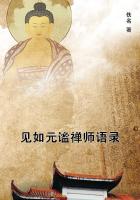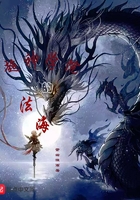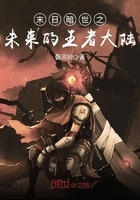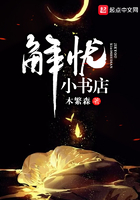Analogous to rachitis is achondroplasia, or the so called fetal rickets--a disease in which deformity results from an arrest, absence, or perversion of the normal process of enchondral ossification. It is decidedly an intrauterine affection, and the great majority of fetuses die in utero. Thomson reports three living cases of achondroplasia. The first was a child five months of age, of pale complexion, bright and intelligent, its head measuring 23 inches in length. There was a narrow thorax showing the distinct beads of rickets; the upper and lower limbs were very short, but improved under antirachitic treatment. The child died of pneumonia. The other two cases were in adults, one thirty-nine and the other thirty-six. The men were the same height, 49 inches, and resembled each other in all particulars.
They both enjoyed good health, and, though somewhat dwarfed, were of considerable intelligence. Neither had married. Both the upper and; lower limbs showed exaggerations of the normal curves; the hands and feet were broad and short; the gait of both of these little men was waddling, the hunk swaying when they attempted to make any rapid progress.
Osteitis deformans is a hyperplasia of bone described by Paget in 1856. Paget's patient was a gentleman of forty-six who had always enjoyed good health; without assignable cause he began to be subject to aching pains in the thighs and legs. The bones of the left leg began to increase in size, and a year or two later the left femur; also enlarged considerably. During a period of twenty years these changes were followed by a growth of other bones. The spine became firm and; rigid, the head increased 5 1/4 inches in circumference. The bones of the face were not affected. When standing, the patient had a peculiar bowed condition of the legs, with marked flexure at the knees. He finally died of osteosarcoma, originating in the left radius, Paget collected eight cases, five of whom died of malignant disease. The postmortem of Paget's case showed extreme thickening in the bones affected, the femur and cranium particularly showing osteoclerosis. Several cases have been recorded in this country;according to Warren, Thieberge analyzed 43 cases; 21 were men, 22women; the disease appeared usually after forty.
Acromegaly is distinguished from osteitis deformans in that it is limited to hypertrophy of the hands, feet, and face, and it usually begins earlier. In gigantism the so-called "giant growth of bones" is often congenital in character, and is unaccompanied by inflammatory symptoms.
The deformities of the articulations may be congenital but in most cases are acquired. When these are of extreme degree, locomotion is effected in most curious ways. Ankylosis at unnatural angles and even complete reversion of the joints has been noticed. Pare gives a case of reversion, and of crooked hands and feet; and Barlow speaks of a child of two and three-quarter years with kyphosis, but mobility of the lumbar region, which walked on its elbows and knees. The pathology of this deformity is obscure, but there might have been malposition in utero. Wilson presented a similar case before the Clinical Society of London, in 1888. The "Camel-boy," exhibited some years ago throughout the United States, had reversion of the joints, which resembled those of quadrupeds. He walked on all fours, the mode of progression resembling that of a camel.
Figure 216 represents Orloff, "the transparent man," an exhibitionist, showing curious deformity of the long bones and atrophy of the extremities. He derived his name from the remarkable transparency of his deformed members to electric light, due to porosity of the bones and deficiency of the overlying tissues.
Figure 217, taken from Hutchinson's "Archives of Surgery,"represents an extreme case of deformity of the knee-joints in a boy of seven, the result of severe osteoarthritis. The knees and elbows were completely ankylosed.
Infantile spinal paralysis is often the cause of distressing deformities, forbidding locomotion in the ordinary manner. In a paper on the surgical and mechanical treatment of such deformities Willard mentions a boy of fourteen, the victim of infantile paralysis, who at the age of eleven had never walked, but dragged his legs along. His legs were greatly twisted, and there was flexion at right angles at the hips and knees. There was equinovarus in the left foot and equinovalgus in the right.
By an operation of subcutaneous section at the hips, knees, and feet, with application of plaster-of-Paris and extension, this hopeless cripple walked with crutches in two months, and with an apparatus consisting of elastic straps over the quadriceps femoris, peroneals, and weakened muscles, the valgus-foot being supported beneath the sole. In six months he was walking long distances; in one year he moved speedily on crutches. Willard also mentions another case of a girl of eleven who was totally unable to support the body in the erect position, but could move on all fours, as shown in figure 219. There was equinovarus in the right foot and valgus in the left. The left hip was greatly distorted, not only in the direction of flexion, but there was also twisting of the femoral neck, simulating dislocation. This patient was also operated on in the same manner as the preceding one.
Relative to anomalous increase or hypertrophy of the bones of the extremities, Fischer shows that an increase in the length of bone may follow slight injuries. He mentions a boy of twelve, who was run over by a wagon and suffered a contusion of the bones of the right leg. In the course of a year this leg became 4 1/2 cm.
longer than the other, and the bones were also much thicker than in the other. Fischer also reports several cases of abnormal growth of bone following necrosis. A case of shortening 3 3/4cm., after a fracture, was reduced to one cm. by compensatory growth. Elongation of the bone is also mentioned as the result of the inflammation of the joint. Warren also quotes Taylor's case of a lady who fell, injuring, but not fracturing, the thigh.
Gradual enlargement, with an outward curving of the bone, afterward took place.

